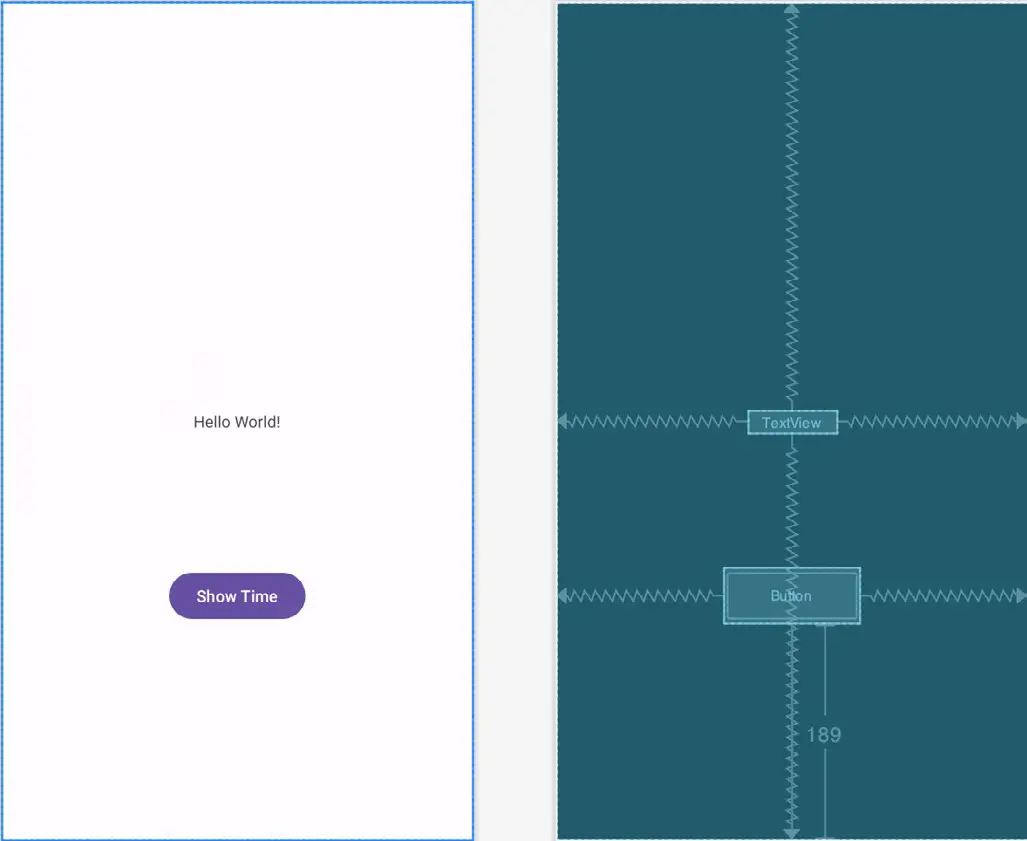As outlined in the previous chapter, Bound services provide a mechanism for implementing communication between an Android service and one or more client components. This chapter builds on the overview of bound services provided in An Overview of Android Services before embarking on an example implementation of a local bound service.
Understanding Bound Services
Bound services are provided to allow applications to perform tasks in the background. Multiple client components may bind to a bound service and, once bound, interact with that service using various mechanisms.
Bound services are created as sub-classes of the Android Service class and must, at a minimum, implement the onBind() method. Client components bind to a service via a call to the bindService() method. The first bind request to a bound service will result in a call to that service’s onBind() method (subsequent bind requests do not trigger an onBind() call). Clients wishing to bind to a service must also implement a ServiceConnection subclass containing onServiceConnected() and onServiceDisconnected() methods, which will be called once the client-server connection has been established or disconnected, respectively. In the case of the onServiceConnected() method, this will be passed an IBinder object containing the information needed by the client to interact with the service.
Bound Service Interaction Options
Two recommended mechanisms for implementing interaction between client components and a bound service exist. Suppose the bound service is local and private to the same application as the client component (in other words, it runs within the same process and is not available to components in other applications). In that case, the recommended method is to create a subclass of the Binder class and extend it to provide an interface to the service. An instance of this Binder object is then returned by the onBind() method and subsequently used by the client component to access methods and data held within the service directly.
When the bound service is not local to the application (in other words, it is running in a different process from the client component), interaction is best achieved using a Messenger/Handler implementation.
In the remainder of this chapter, an example will be created to demonstrate the steps involved in creating, starting, and interacting with a local, private bound service.
A Local Bound Service Example
The example application created in the remainder of this chapter will consist of a single activity and a bound service. The purpose of the bound service is to obtain the current time from the system and return that information to the activity, where it will be displayed to the user. The bound service will be local and private to the same application as the activity.
Select the New Project option from the welcome screen and, within the resulting new project dialog, choose the Empty Views Activity template before clicking on the Next button.
Enter LocalBound into the Name field and specify com.ebookfrenzy.localbound as the package name. Before clicking on the Finish button, change the Minimum API level setting to API 26: Android 8.0 (Oreo) and the Language menu to Kotlin. Use the steps in section 18.8 Migrating a Project to View Binding to migrate the project to view binding. Once the project has been created, the next step is to add a new class to act as the bound service.
Adding a Bound Service to the Project
To add a new class to the project, right-click on the package name (located under app -> kotlin+java -> com.ebookfrenzy. localbound) within the Project tool window and select the New -> Service -> Service menu option. Specify BoundService as the class name and make sure that both the Exported and Enabled options are selected before clicking on Finish to create the class. Android Studio will load the BoundService.kt file into the editor, where it will read as follows:
package com.ebookfrenzy.localbound
import android.app.Service
import android.content.Intent
import android.os.IBinder
class BoundService : Service() {
override fun onBind(intent: Intent): IBinder {
TODO("Return the communication channel to the service.")
}
}Code language: Kotlin (kotlin)Implementing the Binder
As previously outlined, local bound services can communicate with bound clients by passing an appropriately configured Binder object to the client. This is achieved by creating a Binder subclass within the bound service class and extending it by adding one or more new methods the client can call. This usually involves implementing a method that returns a reference to the bound service instance. With a reference to this instance, the client can then access data and call methods within the bound service directly.
For this example, some changes are needed to the template BoundService class created in the preceding section. In the first instance, a Binder subclass needs to be declared. This class will contain a single method named getService() which will return a reference to the current service object instance (represented by the this keyword). With these requirements in mind, edit the BoundService.kt file and modify it as follows:
package com.ebookfrenzy.localbound
import android.app.Service
import android.content.Intent
import android.os.IBinder
import android.os.Binder
class BoundService : Service() {
private val myBinder = MyLocalBinder()
override fun onBind(intent: Intent): IBinder {
TODO("Return the communication channel to the service.")
}
inner class MyLocalBinder : Binder() {
fun getService() : BoundService {
return this@BoundService
}
}
}Code language: Kotlin (kotlin)Having made the changes to the class, it is worth taking a moment to recap the steps performed here. First, a new subclass of Binder (named MyLocalBinder) is declared. This class contains a single method to return a reference to the current instance of the BoundService class. A new instance of the MyLocalBinder class is created and assigned to the myBinder IBinder reference (since Binder is a subclass of IBinder, there is no type mismatch in this assignment).
Next, the onBind() method needs to be modified to return a reference to the myBinder object, and a new public method implemented to return the current time when called by any clients that bind to the service:
package com.ebookfrenzy.localbound
import android.app.Service
import android.content.Intent
import android.os.IBinder
import android.os.Binder
import java.text.SimpleDateFormat
import java.util.*
class BoundService : Service() {
private val myBinder = MyLocalBinder()
override fun onBind(intent: Intent): IBinder {
return myBinder
}
fun getCurrentTime(): String {
val dateformat = SimpleDateFormat("HH:mm:ss MM/dd/yyyy",
Locale.US)
return dateformat.format(Date())
}
inner class MyLocalBinder : Binder() {
fun getService() : BoundService {
return this@BoundService
}
}
}Code language: Kotlin (kotlin)At this point, the bound service is complete and is ready to be added to the project manifest file. Locate and double-click on the AndroidManifest.xml file for the LocalBound project in the Project tool window and, once loaded into the Manifest Editor, verify that Android Studio has already added a <service> entry for the service as follows:
<?xml version="1.0" encoding="utf-8"?>
<manifest xmlns:android="http://schemas.android.com/apk/res/android"
package="com.ebookfrenzy.localbound.localbound" >
<application
android:allowBackup="true"
android:icon="@mipmap/ic_launcher"
android:label="@string/app_name"
android:theme="@style/AppTheme" >
<service
android:name=".BoundService"
android:enabled="true"
android:exported="true" >
</service>
<activity
android:name=".MainActivity" >
<intent-filter>
<action android:name="android.intent.action.MAIN" />
<category android:name="android.intent.category.LAUNCHER" />
</intent-filter>
</activity>
</application>
</manifest>Code language: HTML, XML (xml)The next phase is writing the code within the activity to bind to the service and call the getCurrentTime() method.
Binding the Client to the Service
For this tutorial, the client is the MainActivity instance of the running application. As previously noted, to successfully bind to a service and receive the IBinder object returned by the service’s onBind() method, it is necessary to create a ServiceConnection subclass and implement onServiceConnected() and onServiceDisconnected() callback methods. Edit the MainActivity.kt file and modify it as follows:
package com.ebookfrenzy.localbound
import androidx.appcompat.app.AppCompatActivity
import android.os.Bundle
import android.content.ComponentName
import android.content.Context
import android.content.ServiceConnection
import android.os.IBinder
import android.content.Intent
class MainActivity : AppCompatActivity() {
private lateinit var binding: ActivityMainBinding
var myService: BoundService? = null
var isBound = false
.
.
private val myConnection = object : ServiceConnection {
override fun onServiceConnected(className: ComponentName,
service: IBinder) {
val binder = service as BoundService.MyLocalBinder
myService = binder.getService()
isBound = true
}
override fun onServiceDisconnected(name: ComponentName) {
isBound = false
}
}
}Code language: Kotlin (kotlin)The onServiceConnected() method will be called when the client binds successfully to the service. The method is passed as an argument the IBinder object returned by the onBind() method of the service. This argument is cast to an object of type MyLocalBinder. Then the getService() method of the binder object is called to obtain a reference to the service instance, which, in turn, is assigned to myService. A Boolean flag indicates that the connection has been successfully established.
The onServiceDisconnected() method is called when the connection ends and sets the Boolean flag to false.
Having established the connection, the next step is to modify the activity to bind to the service. This involves the creation of an intent and a call to the bindService() method, which can be performed in the onCreate() method of the activity:
override fun onCreate(savedInstanceState: Bundle?) {
.
.
val intent = Intent(this, BoundService::class.java)
bindService(intent, myConnection, Context.BIND_AUTO_CREATE)
}Code language: Kotlin (kotlin)Completing the Example
All that remains is to add a mechanism for calling the getCurrentTime() method and displaying the result to the user. As is now customary, Android Studio will have created a template activity_main.xml file for the activity containing only a TextView. Load this file into the Layout Editor tool and, using Design mode, select the TextView component and change the ID to myTextView. Add a Button view beneath the TextView and change the text on the button to read “Show Time”, extracting the text to a string resource named show_time. On completion of these changes, the layout should resemble that illustrated in Figure 64-1. If any constraints are missing, click on the Infer Constraints button in the Layout Editor toolbar.

Complete the user interface design by selecting the Button and configuring the onClick property to call a method named showTime.
Finally, edit the MainActivity.kt file code to implement the showTime() method. This method calls the getCurrentTime() method of the service (which, thanks to the onServiceConnected() method, is now available from within the activity via the myService reference) and assigns the resulting string to the TextView:
package com.ebookfrenzy.localbound
.
.
class MainActivity : AppCompatActivity() {
var myService: BoundService? = null
var isBound = false
fun showTime(view: View) {
val currentTime = myService?.getCurrentTime()
binding.myTextView.text = currentTime
}
.
.
}Code language: Kotlin (kotlin)Testing the Application
With the code changes complete, perform a test run of the application. Once visible, touch the button and note that the text view changes to display the current date and time. The example has successfully started and bound to a service and then called a method of that service to cause a task to be performed, and the results returned to the activity.
Summary
When a bound service is local and private to an application, components within that application can interact with the service without resorting to inter-process communication (IPC). In general terms, the service’s onBind() method returns an IBinder object containing a reference to the running service instance. The client component implements a ServiceConnection subclass containing callback methods that are called when the service is connected and disconnected. The former method is passed the IBinder object returned by the onBind() method, allowing public methods within the service to be called.
Having covered the implementation of local bound services, the next chapter will focus on using IPC to interact with remote bound services.

